Iran's gross domestic product in the third quarter of the current Iranian year (March 21-Dec. 21, 2019) stood at +1.2%, Governor of the Central Bank of Iran Abdolnasser Hemmati wrote in an Instagram post.
He added that the growth stood at +3.3%, excluding oil production.
According to the CBI governor, the sectors of agriculture, industry and mines, as well as services, grew by 7.8%, 7% and 1.2% respectively.
He put economic growth sans oil during the nine-month period to Dec. 21 at +1.3%.
His comments come after the head of Statistical Center of Iran, Javad Hosseinzadeh, said last month that Iran's gross domestic product, excluding oil production, recorded a positive growth rate of 0.9% in the third quarter of the current fiscal year (Sept. 23-Dec. 21).
The overall GDP growth, including oil production, however, stood at -1.7% for the period, the SCI official said.
The sectors of agriculture, industries and mines, as well as services, according to Hosseinzadeh, registered growth rates of -1.4%, -1.9%, and -0.7% respectively in Q3, Fars News Agency reported.
He put Q1-3 economic growth at -7.6%, adding that the figure stands at 0%, excluding oil production.
"The sectors of agriculture, industries and mines, as well as services, registered growth rates of 3.2%, -16.6% and -0.2 respectively for the Q1-3 period," he added.
UN Forecasts
The United Nations forecasts Iran's economy to shrink by 2.7% and 1.2% in 2020 and 2021 respectively.
In its latest publication, "World Economic Situation and Prospects 2020", the UN estimated the country's GDP to have contracted by 7.1% in 2019 after a 2% contraction in the year before.
This is while, according to the world body, the Islamic Republic experienced a growth rate of 13.4% in 2016—the highest since 2012.
The UN has put Iran's average GDP growth at 3.9% between 1997 and 2011.
"Serious flooding, reimposition of sanctions by the United States and increasing tensions with Saudi Arabia have hit the economy hard, sending the country’s exports into a nosedive. Investment and private consumption growth have decelerated ... While the government has already increased spending to address challenges created by economic recession, it will take several years for economic growth to return to positive territory. The country’s critical lack of economic diversification will continue to cloud its economic outlook," the UN publication reads.
The Islamic Republic of Iran, in particular, is highly exposed to the effects of an energy transition owing to its extremely high dependence on fossil-fuel resources, which are at substantial risk of depletion, it added.
The World Economic Situation and Prospects 2020 is a joint product of the United Nations Department of Economic and Social Affairs (UN DESA), the United Nations Conference on Trade and Development and the five United Nations regional commissions: Economic Commission for Africa (UNECA), Economic Commission for Europe (UNECE), Economic Commission for Latin America and the Caribbean (UNECLAC), Economic and Social Commission for Asia and the Pacific (UNESCAP) and Economic and Social Commission for Western Asia (UNESCWA).
The United Nations World Tourism Organization, the UN Office of the High Representative for the Least Developed Countries, Landlocked Developing Countries and Small Island Developing States (UN-OHRLLS), and the International Labour Organization also contributed to the report.
World Bank Forecasts
The World Bank estimates that Iran's economy shrank 8.7% in 2019 compared to the year before.
The international financial institution's latest estimate in its January 2020 edition of "Global Economic Prospects" has been revised down by 4.2% compared to the report’s June 2019 edition.
World Bank's forecast for Iran's GDP growth in 2020 is 0%, while its forecasts for 2021 and 2022 are 1% each.
The report also shows Iran's economy contracted by 4.9% in 2018 after experiencing a 3.8% growth in 2017.
The contraction of Iran's economy in 2019 owes mainly to external shocks to oil and gas sector output. Its plummeting exports come after the expiration of US waivers to major importers of Iranian oil and tightening of banking sector restrictions, in addition to new sanctions imposed on the country’s petrochemicals, metals, mining and maritime sectors, the World Bank said in an autumn economic update released on Oct. 9. Excerpts follow:
The oil sector decline, coupled with international trade and capital flow restrictions, has negatively influenced economic activity in key non-oil sectors, including auto, machinery and construction sectors that have faced supply chain challenges and higher operational costs.
In August 2019, the housing sector registered the lowest volume of sales in six years while prices rose by around 78% year-on-year. On the supply side, these developments, among other shocks such as floods and earthquakes, are likely to result in further stagnation in the services sector, the largest production component of GDP (56% share in 2017-18).
Similarly, the GDP expenditure components are to be strongly influenced by the shock to exports. However, the simultaneous reduction in imports is expected to moderate part of the downward pressure on the trade balance and current account. Real government consumption is also expected to contract at a faster rate of 5.4% compared to the previous round of oil export embargos placed on Iran in 2012-13.
The fiscal deficit is estimated to widen further to around 5.6% of GDP in 2019-20, as more than 30% (and as high as 63% in 2002-03) of the government budget is sourced directly from the sales of oil and gas.
The reduction in tax base due to lower economic activity would also have a negative effect on current revenues and is likely to come at the expense of lower capital expenditures, which have been under-realized relative to the budget-approved levels in recent years.
The medium-term economic outlook remains challenging. The baseline assumption for the medium-term rests on continued oil exports of around 500,000 barrels per day on average.
In the coming years, the effect of the recent large exchange rate depreciation could allow the country’s goods and services to become more competitive regionally and help close the expected current account deficit gradually.
The fiscal deficit is projected to further widen in the next two years due to the legacy of the 2018-19 oil shock, pushing government expenditures such as social protection measures upwards at the same time as receiving lower oil income and tax revenues.
Other Challenges
Political and economic uncertainty makes it difficult to project future poverty trends.
However, a sharp decline in real GDP per capita and double-digit inflation are expected to have a strong negative impact on poverty rates through different channels, including the labor market, increasing costs of living and a further erosion of the real value of cash transfers. Future poverty rates will also depend on the government’s public policy response. Any increase in the value of cash transfers, possibly along with introducing targeting mechanisms, could help the poor and vulnerable population cope with the socioeconomic shocks, but fiscal constraints may limit the scope for significant response.
The nature of uncertainties facing the economy means that downward risks to the projected growth path remain in place. If oil exports were to be curtailed further, the economy could enter into a deeper recession and experience higher inflation rates.
The challenge of protecting the vulnerable households would put additional pressure on the government finances and potentially the value of rial. Further restrictions on existing trade volumes and financial transaction arrangements with Iran’s neighbors could also pose a major risk to the current projections.
If unaddressed, the ongoing liquidity and recapitalization challenges of the banking sector could further undermine banks’ ability to continue facilitating economic activity.
These important challenges highlight the crucial role of further economic diversification by focusing on non-oil sources of growth and government revenues.
Building on the existing economic base in the non-oil traded sector would improve resilience to external shocks and achieve a long-envisioned development plan goal that has been elusive to Iran and other countries in the region, the World Bank’s report concluded.
The International Monetary Fund estimates Iran's economy to have further shrunk to -9.5% in 2019 from -4.8% in 2018.
The IMF's latest World Economic Outlook report shows the country will experience zero economic growth in 2020. It had previously forecast Iran’s economy to shrink by 6% this year, but that estimate preceded Washington’s decision in April to end six months of waivers that had allowed Iran’s eight biggest oil buyers to continue importing limited volumes, Reuters reported.
"Iran, a large oil producer, saw its oil revenues surge after a 2015 nuclear pact agreed with six major powers that ended a sanctions regime imposed three years earlier over its disputed nuclear program. But new sanctions brought in after US President Donald Trump withdrew from that deal in 2018 are the most painful imposed by Washington, targeting nearly all sectors of Iran’s economy," Reuters wrote.
The fund said Iran, along with other emerging market economies, continues to experience “very severe macroeconomic distress”.



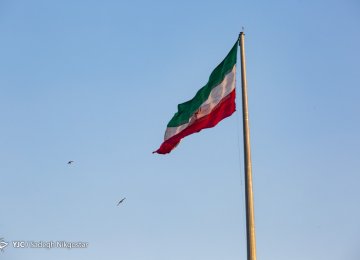
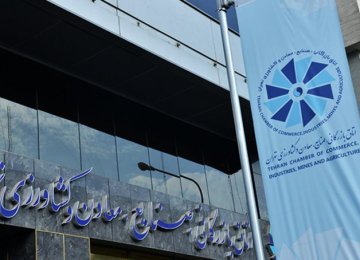
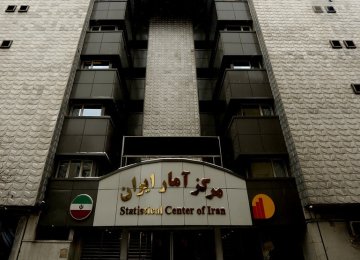
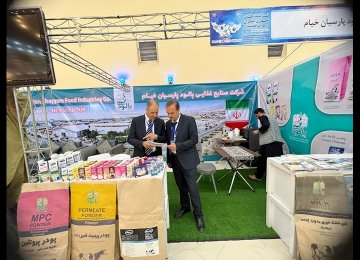
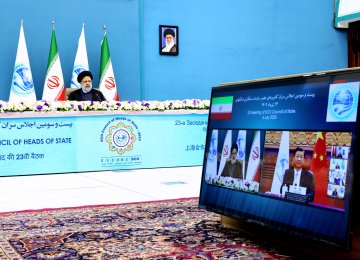
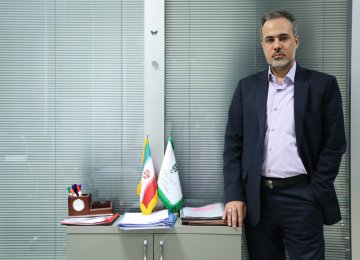
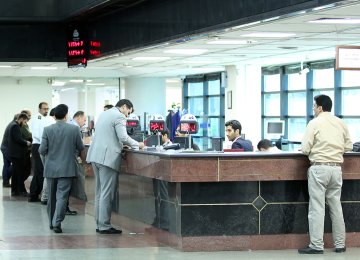
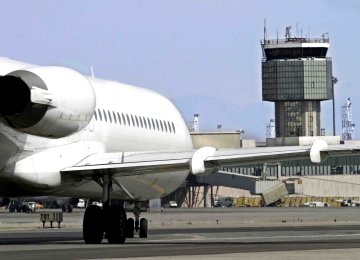


Add new comment
Read our comment policy before posting your viewpoints